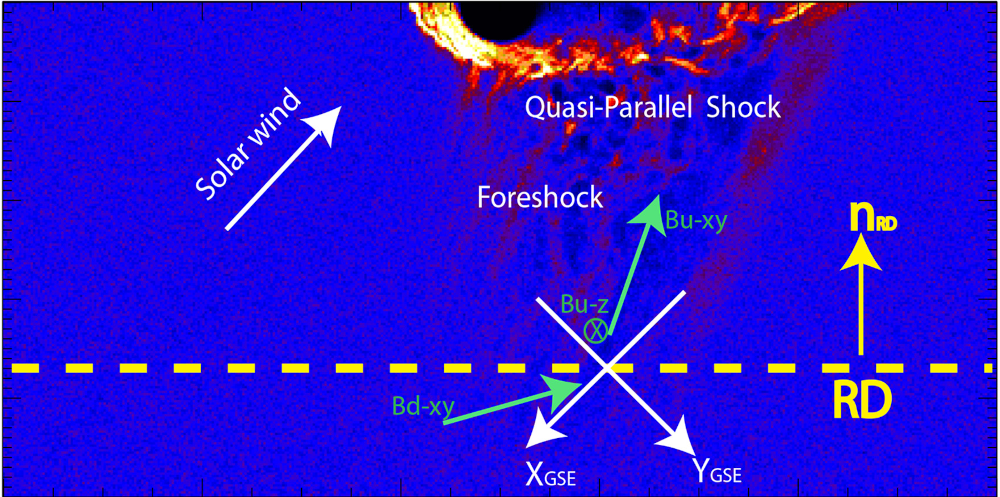One of the outstanding questions in the field of solar-terrestrial relations concerns how the solar wind transfers energy, momentum and mass into our planet’s magnetosphere. This transfer leads to magnetospheric and ionospheric disturbances that form part of the phenomena known as space weather. Some of them may interrupt the proper functioning of our technological systems, such as electric grids, GPS signal and artificial satellites.
One transfer mechanism involves the formation of transient upstream mesoscale phenomena. These are magnetic and plasma structures with sizes up to a few 10s of Earth Radi and with durations of up to several 10s of minutes in the spacecraft data. It has been shown in the past that these structures may cause displacements of the magnetopause and are a source of certain magnetospheric waves. They have been shown to interact with the bow-shock, modify the magnetosheath, distort the magnetopause, trigger magnetopause reconnection and contribute to radiation belt diffusion, but the details about how this occurs are still largely unknown.
Our team consists of scientists who specialize in processes in the near-Earth environment (foreshock, bow-shock, magnetosheath, magnetosphere, ionosphere). Our mission is to deepen our knowledge and decisively quantify how the upstream mesoscale structures get transmitted across the bow-shock into the magnetosheath and how they impact the magnetosphere.We use spacecraft in-situ measurements, ground based data and global and local hybrid numerical models in order to answer some of the open questions, such as: How do the upstream transients interact with the bow-shock and what are the consequences of these interactions for the magnetosheath? What and how significant are the impacts of the various mesoscale structures on the magnetosphere and the ionosphere?
Specific scientific objectives of our team are to answer the following questions:
- How are the various mesoscale structures modified as they cross the BS? Are their spatial scales and internal structure similar as in the upstream?
- How often and under which SW conditions can the upstream mesoscale structures perturb the magnetosphere and thus be geoeffective? Is their geoeffectiveness limited to the dayside or does it extend to the nightside magnetosphere? Are the impacts of mesoscale structures on the magnetosphere correctly predicted by numerical models?
- Can we distinguish between the magnetosheath/magnetospheric/ionospheric signatures of larger mesoscale phenomena, namely FBs and HFAs, whose upstream signatures are very similar?
- How often do SHFAs cause the shock erosion predicted by numerical models and to what extent? Do they cause magnetosheath cavities, as the models predict? Can they produce magnetosheath jets?

